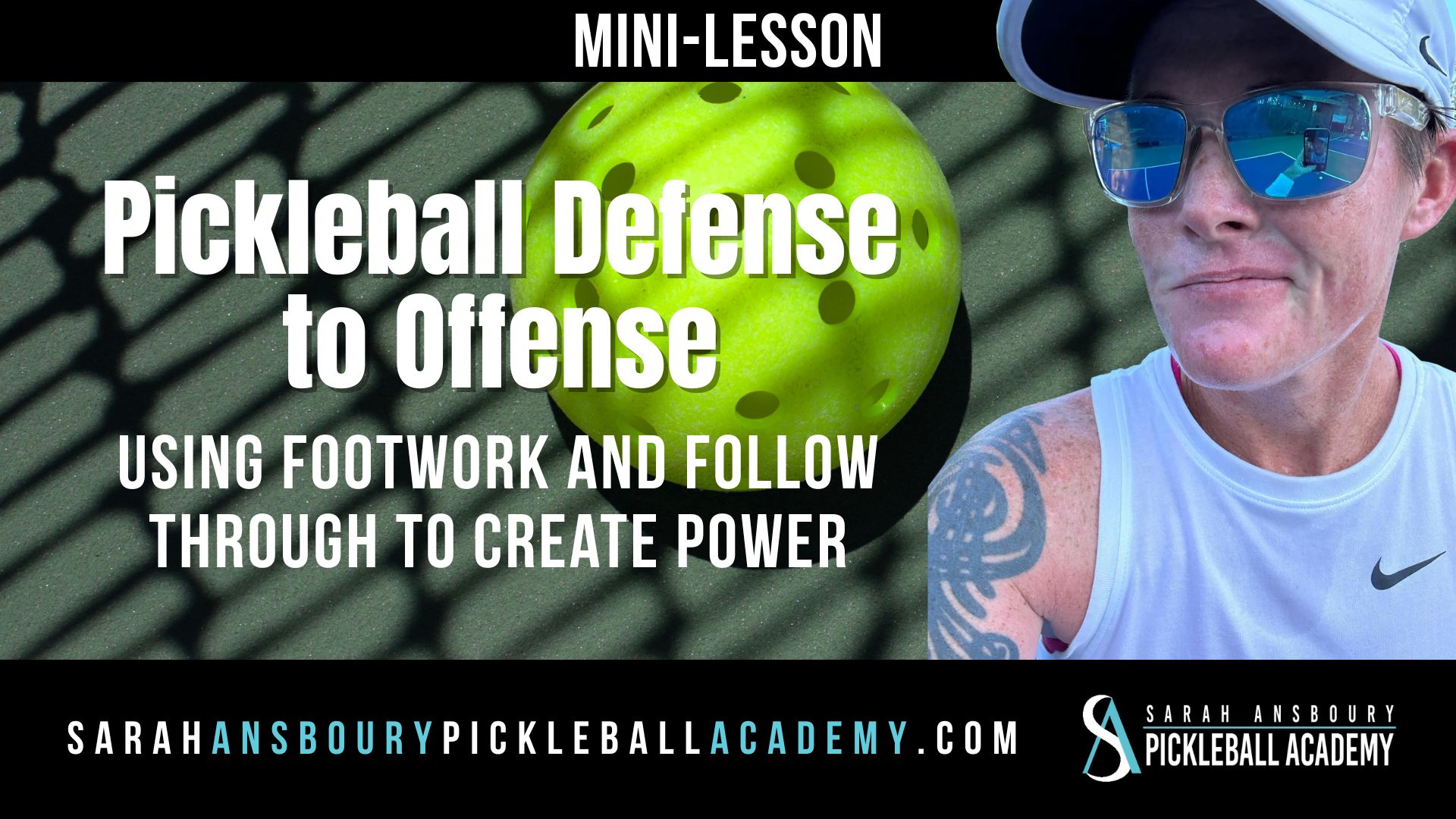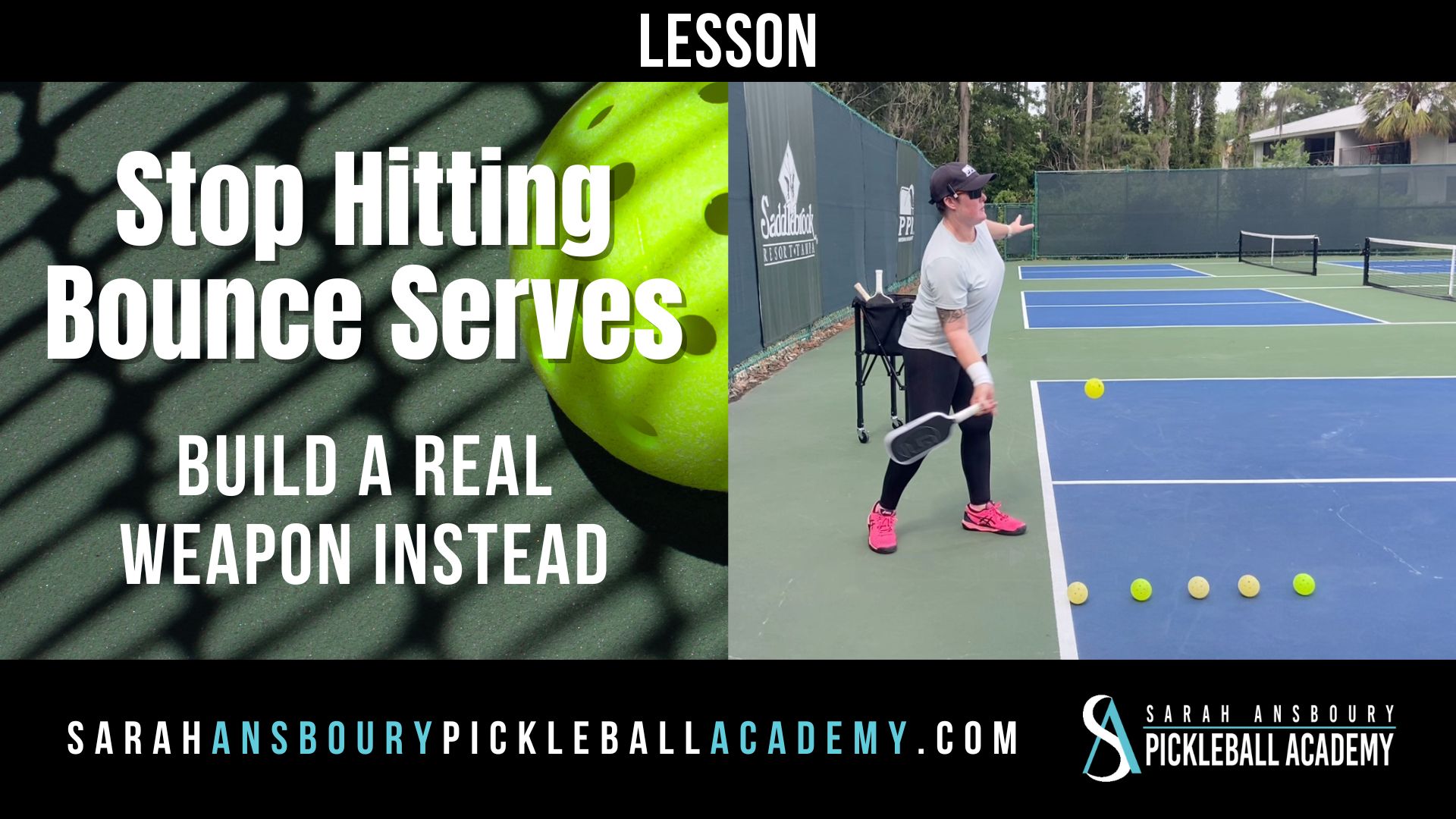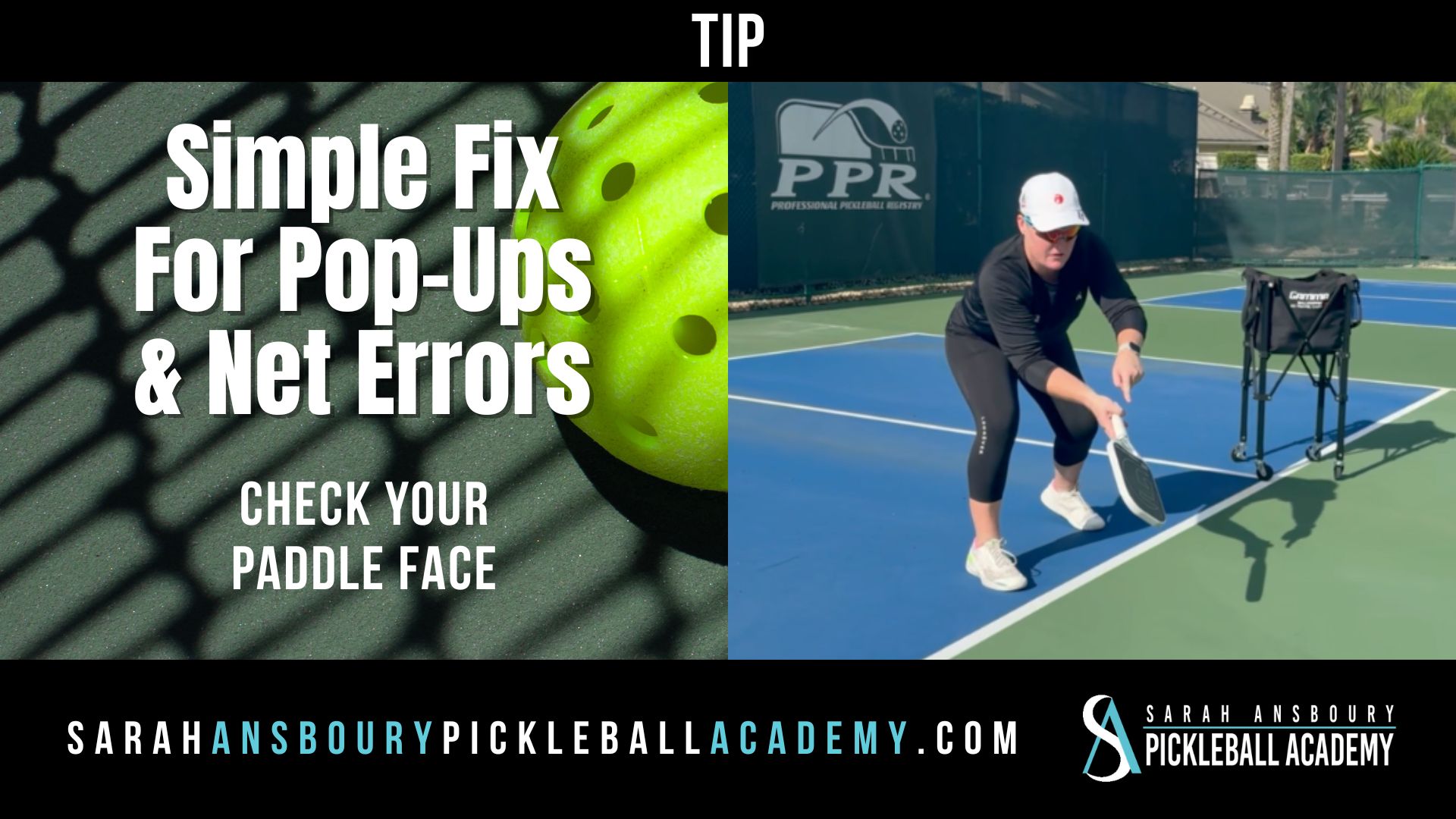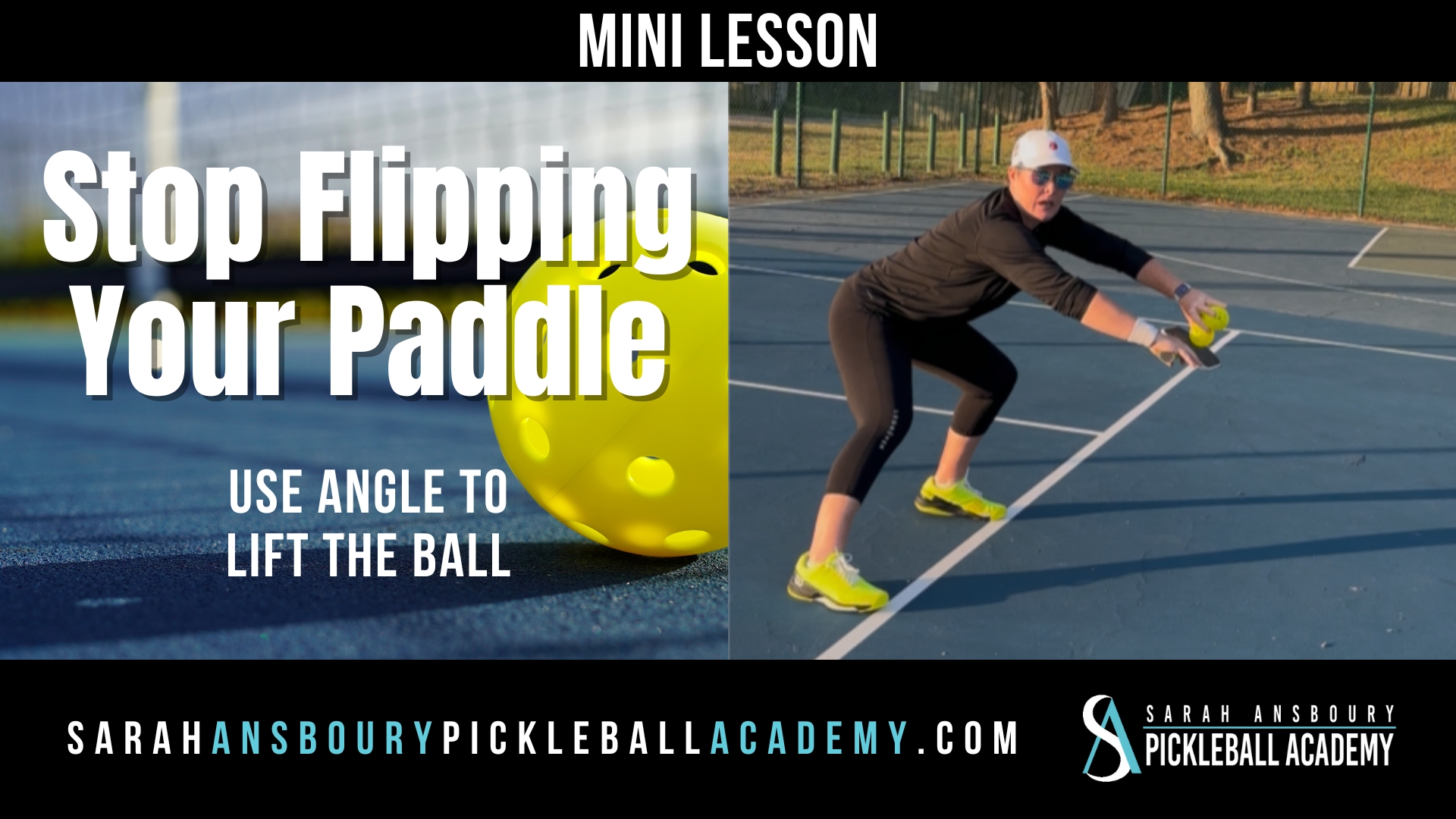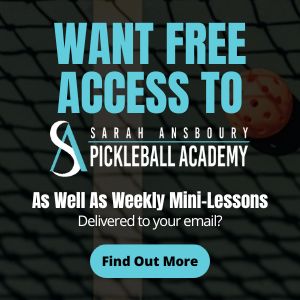What is so important about holding your line? Everything! Pickleball is played at the non-volley zone line. If you are not positioned at the non-volley zone line for the majority of the game, you are playing a different game.
What Are Your Options At The Non-Volley Zone?
In Pickleball a lot of our shots are fundamentally the same, especially at the non-volley zone line.
- Lobbing
- Dinking
- Attacking
Pickleball Offensive Lob Option
Ideally we should try and take the ball in the air because a ball in the air has more energy. If we wait for the ball to bounce it’s moving slower and rather than using the ball’s energy you have to put more energy into the the shot.
Pickleball Dinking Option
Using the same fluid motion and a softer touch is great way to create your rhythm and set up one of the other 2 shots. Knowing you might get a ball in the air to lob or attack.
Pickleball Attacking Option
Just like I mentioned before when you are at the line and you see the ball in the air one option is to lob but the second option in to attack. Once again using the energy from a ball that hasn’t bounced to send it back at your opponent. The difference is with an attack shot you will be looking for that ball to come back to you. So make sure you finish with your paddle up and in front of you so you are ready to return that shot.
Simplify and keep your focus when you practice these options.
Getting To The Non-Volley Zone Line
The first step to holding the line is to get there. If you don’t get to the non-volley zone you will not improve. If you have mobility challenges, consider hitting a high, loopy service return rather than driving the ball. Hitting a high, deep return gives you more time to move to the line. There are many players that have perfected this shot and can actually walk to the line. Consider using the line as a guide. If you are properly positioned at the non-volley zone, your paddle will be extended over the non-volley zone in front of you.
Holding the Line
Many players fear being at the line, and I certainly understand the concern. Being at the line is tough. You are so close to your opponent, and that ball can start coming at you FAST! It is only natural to start backing up, hoping to give yourself more time and space to respond. And there are certainly times when stepping back can help you. However, if you don’t return to the line as soon as you are able, you are giving your opponent a significant advantage:
opponent, and that ball can start coming at you FAST! It is only natural to start backing up, hoping to give yourself more time and space to respond. And there are certainly times when stepping back can help you. However, if you don’t return to the line as soon as you are able, you are giving your opponent a significant advantage:
- You are providing them more space to aim at in front of you;
- You are giving them the ability to aim directly at your feet. If you don’t believe me let me suggest a quick experiment. Stand at the non-volley zone line and ask a friend to stand on the opposing line. Look at their feet. If you are both at the net, it is likely you will be seeing their feet through the net. Now ask them to step back about one foot. Depending on your height, it may take just a few inches for you to see their feet “above” the net.
- Once you begin to move back your opponent will typically attempt to drive your back further…creating more space and more options.
Managing Your Movement
Often players are just moving so much they never get set on the line. Any unnecessary movement will leave you staggering backward. Your goal during a point is for you and your partner to both be holding the line. When you get to the line start paying attention to where your body weight is. Is it set into the ground on the balls of your feet? If so good!
If you can feel your calves engaged you are likely leaning forward onto your toes, making it more difficult to plant your weight and transfer it effectively into your shots. If you are locked on your heels you will likely be too upright. You want your knees bent but you want your back upright. You don’t want to bend from the waist as this will cause pressure on your spine and neck. I want you to be set at the line but also able to shift and move your weight freely.
We tend to back up more when we are hunched over and compressed because our body doesn’t move as freely and naturally. When your body is in control, and balanced, you can adjust and move at the line more easily.
Remember, holding the line is critical to your success when playing Pickleball.


